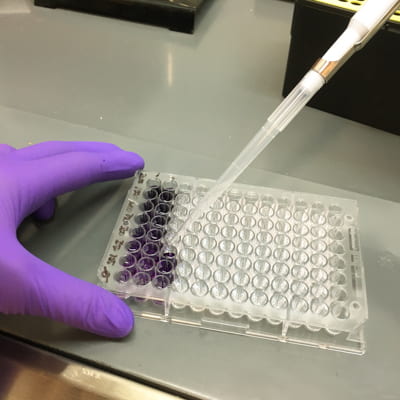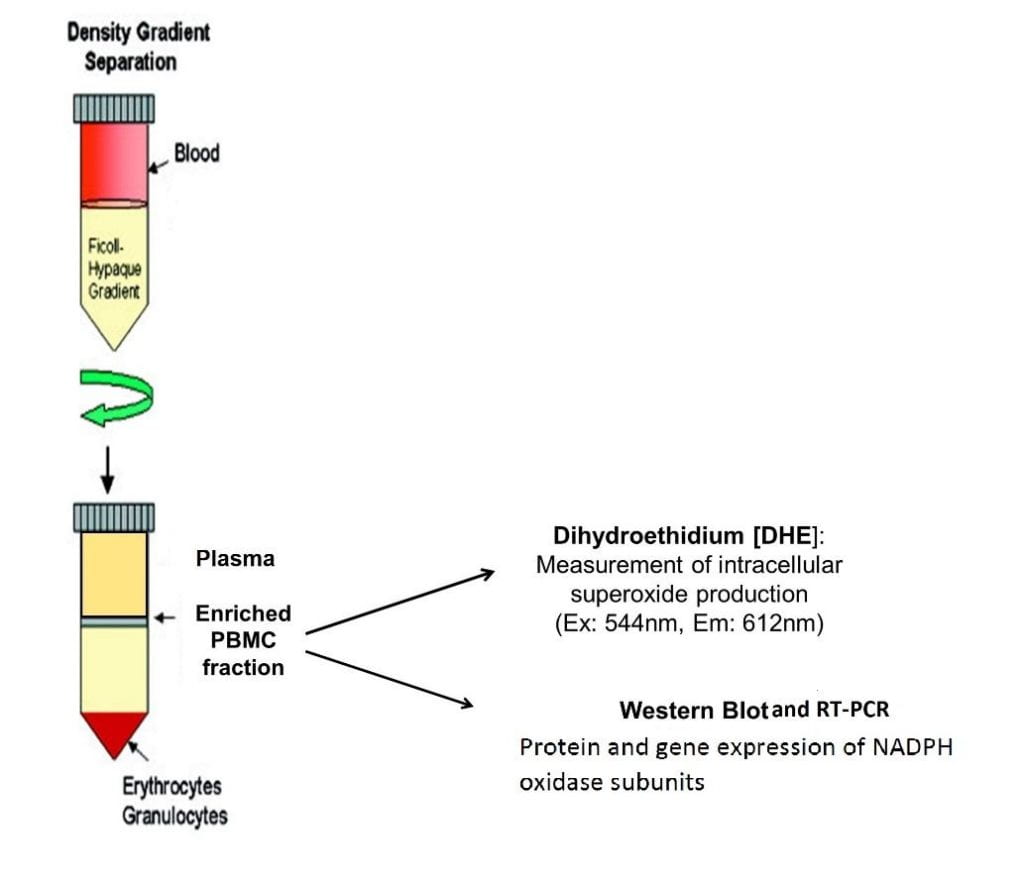
The laboratory explores cardiovascular health on a cellular level incorporating molecular biology techniques such as peripheral blood monoculear cell (PBMC) isolation, protein immunoblot and RNA analysis.
PBMCs are chiefly lymphocytes and monocytes. We have chosen to focus on PBMCs because they are one of the primary contributors to systemic oxidative stress, which is elevated in various cardiovascular diseases such as hypertension.
Once PBMCs are isolated from whole blood, oxidative stress can be detected within the cells by measurement of intracellular superoxide production using a fluorescent dye called dihydroethidium (DHE). Gene and protein expression of PBMC-derived oxidative stress (NADPH oxidase subunits gp91phox, p47phox, and p67phox) can be measured via western blot analysis and RT-PCR.
The technique in which PBMCs are separated from whole blood to be analyzed involves density gradient centrifugation using Ficoll Histopaque briefly described below.
PBMC-derived measures

